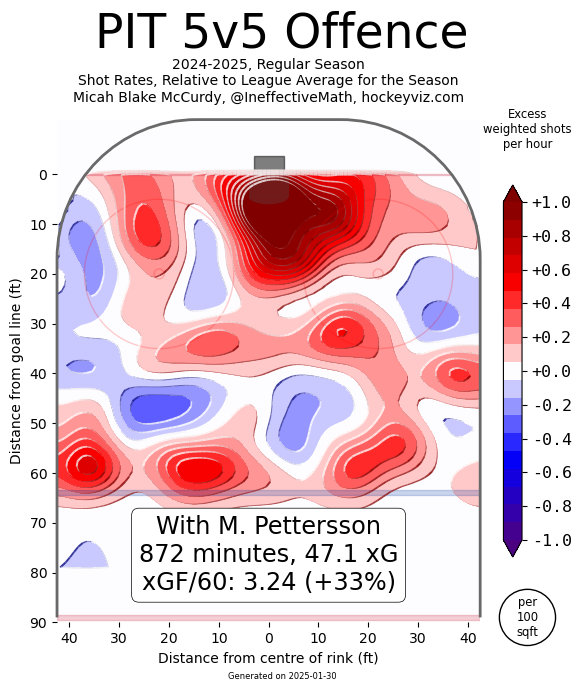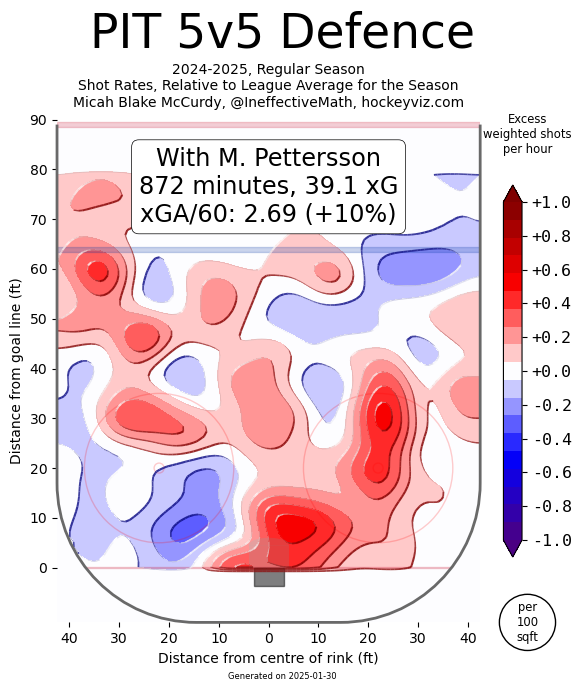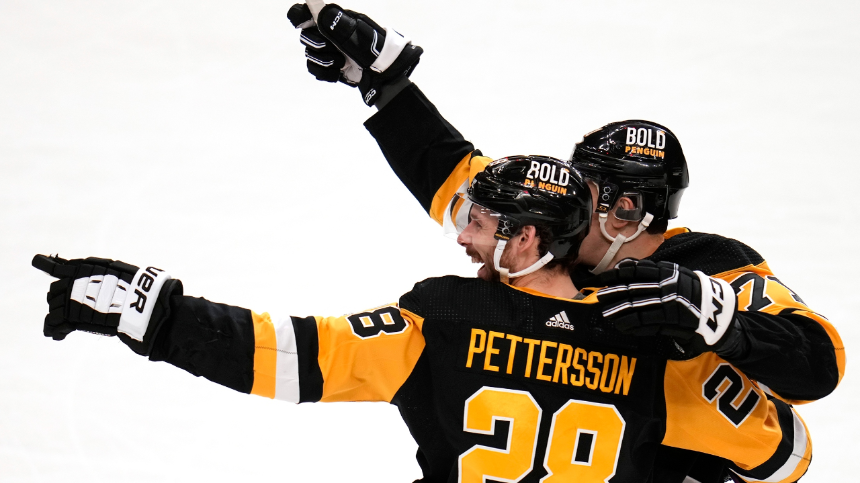The Vancouver Canucks had a busy Friday night.
General manager Patrik Allvin was not fazed by it being a game day for his players, as he made a blockbuster deal an hour before puck drop against the Dallas Stars, sending J.T. Miller to the New York Rangers. But he wasn't done.
Shortly after the final horn sounded in Dallas, he pulled the trigger on another deal to acquire defenceman Marcus Pettersson from the Pittsburgh Penguins.
The full details of the trade are as follows. The Canucks get Marcus Pettersson — the third Pettersson in the organization — and forward Drew O'Connor. In return, the Penguins receive forward Danton Heinen, defenceman Vincent Desharnais, prospect Melvin Fernström, and the first-round pick that they acquired from the Rangers in the Miller trade.
The deal is reminiscent of when the Canucks flipped the first-round pick they received from the New York Islanders to the Detroit Red Wings for Filip Hronek, though this trade obviously came much more quickly.
What did the Canucks give up in the Pettersson trade?
The biggest piece going back to the Penguins is the Rangers' 2025 first-round pick. The pick is top-13 protected, meaning that it will become the Rangers' 2026 first-round pick if the pick is in the top-13 this year.
The Rangers are currently in position to receive the 12th-overall pick in the draft but hope that the addition of J.T. Miller will propel them into the playoff picture. If the Rangers do get into the playoffs, their pick will be in the second half of the first round — still valuable but less so than a lottery pick. The risk for the Canucks is that if the Rangers don't improve, that pick could become a top-ten pick in what is expected to be a very good 2026 draft.
Melvin Fernström is the prospect heading to Pittsburgh. The Canucks took a big swing on Fernström in the third round of the 2024 draft, with the Canucks believing at the time that he had first-round upside in his offensive game. The issue for Fernström that saw him slide to the third round is his lack of pace and limited skating ability.
In his post-draft year, the 18-year-old Fernström has torn up the J20 Nationell — the Swedish junior league — with 11 goals and 18 points in 12 games. That production has been more limited in the SHL, with 3 goals and 8 points in 35 games and he was notably left off the Swedish World Junior squad despite starring in the World Under-18 Championship in the previous year.
The players heading to Pittsburgh, Vincent Desharnais and Danton Heinen, don't seem overly consequential, though Heinen has played a role on the Canucks' penalty kill. Desharnais was a frequent healthy scratch with his inconsistency, while Heinen has underwhelmed after signing a two-year deal.
What did the Canucks get in the Pettersson trade?
As might be expected from calling it "the Pettersson trade," the Canucks got the best player in the deal.
Marcus Pettersson is a legitimate top-four defenceman, who not only has the size the Canucks crave on defence at 6'5" but can also move the puck effectively. One of his biggest strengths as a player is retrieving the puck in the defensive zone and transitioning it up ice, whether through passing the puck or skating it out himself. That fits the team's most pressing need.
Pettersson had 30 points in 82 games last season and is on pace for 29 points in 76 games this season. Pettersson has averaged 22:03 per game in ice time, third on the Penguins behind Kris Letang and Erik Karlsson.
Pettersson has led the Penguins in ice time on the penalty kill this season, though that may not be the strongest endorsement given the Penguins very average penalty kill. Pettersson has been on the ice for 9.80 goals against per 60 minutes while on the penalty kill, which is the highest rate among the Penguins' regular penalty killers.
At 5-on-5, however, Pettersson has strong underlying numbers, leading the Penguins defence in corsi percentage and expected goals percentage at 5-on-5. Much of that impact has come in the offensive zone, as illustrated by his heatmap via HockeyViz.

Pettersson's heatmap in the defensive zone, however, doesn't look quite so good, with quite a few shots coming from dangerous areas in the slot. It should be noted, however, that Pettersson frequently played in a shutdown role for the Penguins, with only Letang playing a higher percentage of his minutes against elite competition, according to PuckIQ.

That's an immediate and significant upgrade for the Canucks on the left side on defence, as Pettersson will step ahead of Derek Forbort and Carson Soucy on the blue line. If the Canucks continue to keep Quinn Hughes and Filip Hronek split up, a Pettersson-Hronek second pairing seems promising.
Drew O'Connor gives the Canucks another penalty-killing forward to replace Heinen, as he averaged 1:39 per game on the Penguins' penalty kill — fourth among Penguins forwards. The underlying numbers look good for O'Connor on the penalty kill.
O'Connor is a hard-working, diligent winger with size at 6'3". He's averaged 14:37 per game for the Penguins this season and has chipped in a little bit of depth scoring, with 6 goals and 16 points in 53 games.
At 5-on-5, the underlying numbers look pretty good for O'Connor, with a 51.6% corsi and 51.4% expected goals, but the bounces have not gone his way, as the Penguins have been outscored 33-to-19 with O'Connor on the ice. The Canucks have to hope that's a result of his .961 PDO and not a reflection of his play on the ice.
The salary cap consequences of the Pettersson trade
While the first-round pick and prospect are a significant price to pay for Pettersson, the upside is that it doesn't hurt the Canucks much on the salary cap.
Pettersson is in the final year of his contract with a cap hit of $4,025,175. Likewise, O'Connor is in the final year of his contract with a cap hit of $925,000. That's a combined cap hit of $4,950,175.
But the Canucks shipped out a combined cap hit of $4,250,000 by trading Heinen and Desharnais to the Penguins. In addition, both Heinen and Desharnais had another year on their contracts after this one, so the Canucks also clear $4,250,000 on next year's cap in the deal.
That shouldn't be brushed aside, as the Canucks added a top-four defenceman while still maintaining plenty of cap space to add at the trade deadline if they feel they're in a position to do so. It also frees up money for free agency, though they could potentially use some of that money to re-sign the 28-year-old Pettersson if he proves to be a good fit.
There are certainly downsides to the deal — the Canucks could be kicking themselves if that first-round pick turns into a top-ten pick in 2026 — but the benefit to the Canucks seems clear, as they address the roster's biggest need on defence without hamstringing their salary cap picture.
Still, trading a first-round pick for two pending unrestricted free agents is a risky move. It's a sign of a team that still believes they can compete this season and make some noise in the playoffs.



